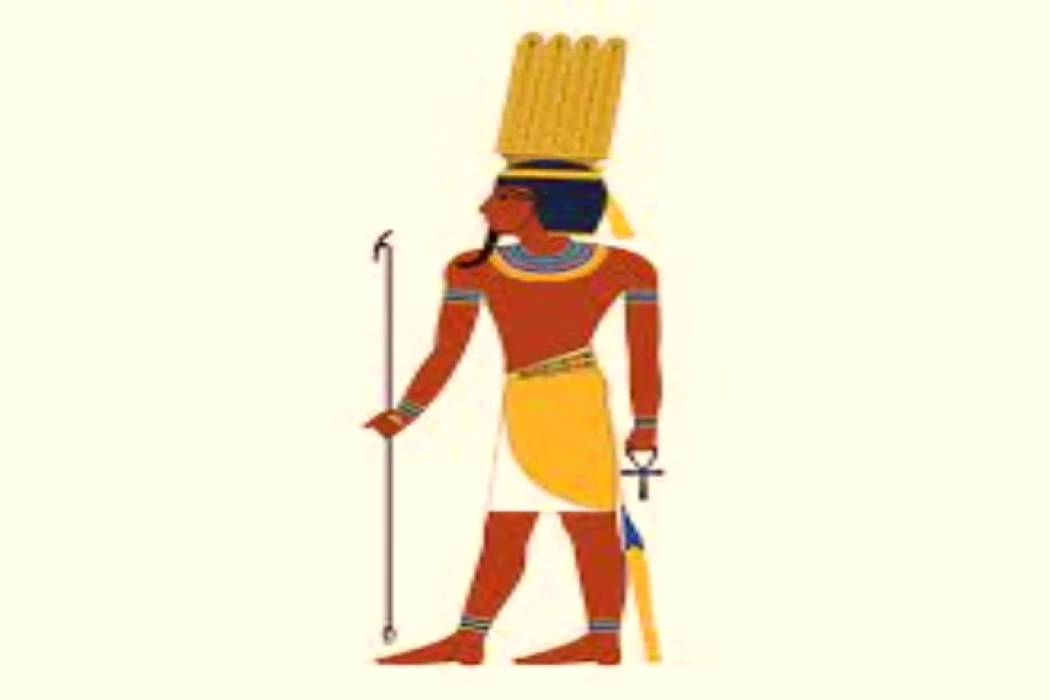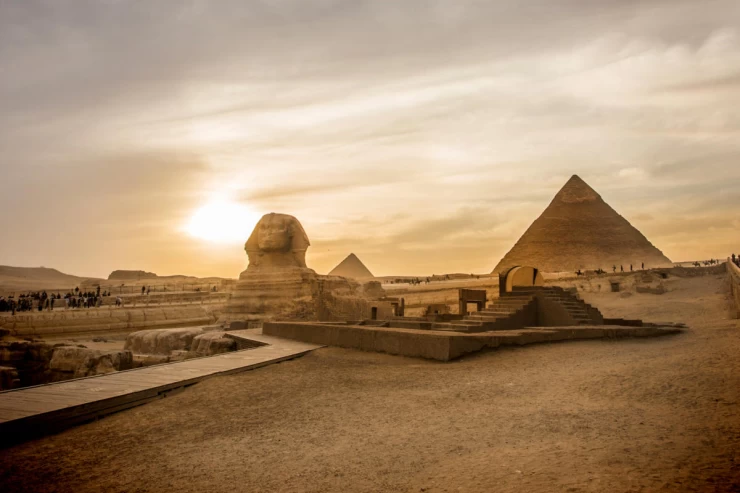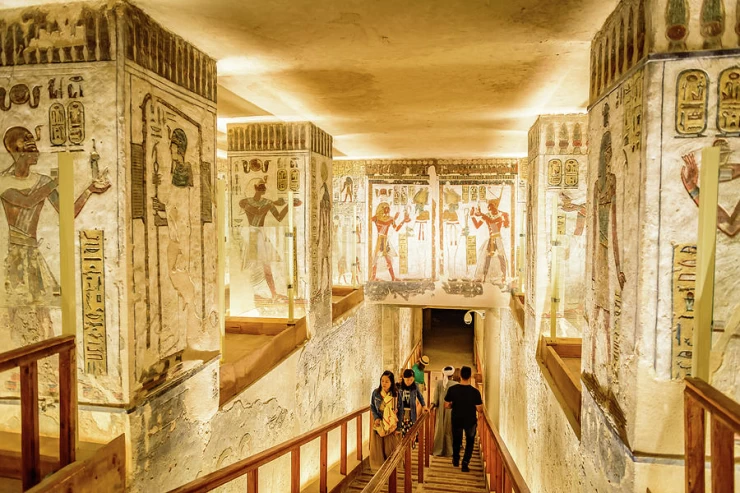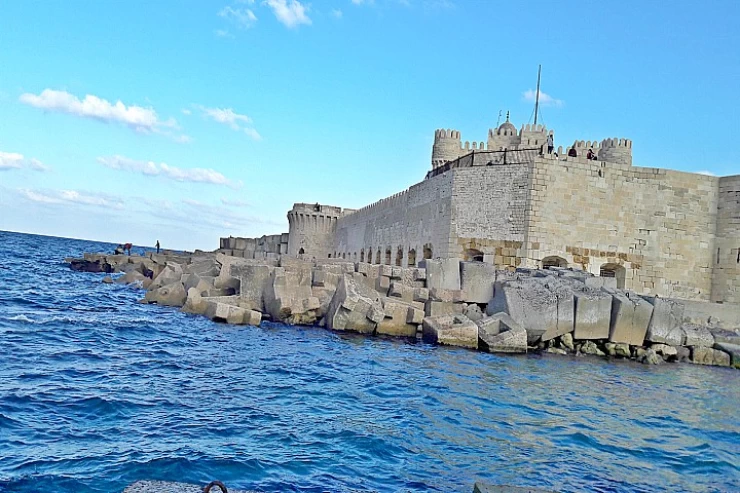
Anhur, dio egizio della guerra e della caccia
Quando l'Egitto era un Paese con confini chiari, punti di riferimento importanti e un sistema di governo esistente, che potete conoscere meglio attraverso i pacchetti di viaggio per l'Egitto, una costituzione, leggi, costumi, sistemi di irrigazione, agricoltura, architettura, edilizia e costruzioni, il mondo viveva sotto il peso dell'ignoranza e della vita primitiva, e tra le caratteristiche della grandezza e del progresso dell'Egitto, oltre alle scienze già citate, c'è il fatto che conosceva l'unico Dio e lo santificava, e potete vederlo durante i tour di un giorno a Luxor. Si avvicinava a lui e gli faceva offerte, prendeva una pianta, un uccello o un animale sacro e lo considerava un simbolo della bontà che il Signore aveva concesso al popolo d'Egitto. Anzi, innalzò questo santuario ed esaltò il suo status, costruì templi per lui come nei tour di un giorno ad Assuan, incise i suoi simboli sulle pareti dei templi e lo chiamò con il titolo di Dio che si può scoprire attraverso i tour di un giorno in Egitto.
Il titolo di dio che veniva dato a queste santità non era inteso per il dio più grande, il Creatore dell'universo, e potrete vederlo durante il vostro tour in Egitto attraverso gli Egypt Classic Tours, ma piuttosto un dio speciale per alcuni aspetti della vita, come l'agricoltura, la fertilità, il Nilo e l'aria, come una sorta di gratitudine e ringraziamento per questa cosa sacra secondo l'antica credenza egizia che potrete conoscere meglio attraverso gli Egypt Luxury Tours.
Anhur era il dio della guerra venerato nella regione egizia di Abydos, soprattutto a Tina, e le antiche storie religiose egizie raccontano che aveva portato con sé dalla Nubia la moglie Mohit, che è la sua controparte femminile.
Uno dei suoi epiteti era "assassino di nemici", raffigurato come un uomo barbuto che indossa una tunica e un copricapo con quattro piume, brandendo una lancia o una lunga lancia, o a volte era raffigurato come una divinità con la testa di leone (il leone simboleggia il potere e l'autorità) come nei templi che si possono visitare durante i tour economici in Egitto.
Anhur era il patrono dell'esercito egiziano e incarnava i guerrieri reali. Inoltre, durante le feste che si tenevano in suo onore, venivano organizzate finte battaglie. In epoca romana, l'imperatore Tiberio era raffigurato sulle pareti dei templi egizi con la caratteristica corona con quattro piume di Anhur, che è possibile vedere durante i tour di Pasqua in Egitto.
Anhur was the god of war worshiped in the Egyptian region of Abydos, especially at Tina, and ancient Egyptian religious stories tell us that he had brought his wife, Mohit, who is his female counterpart, from Nubia can be visited through Egypt Nile Cruise Tours.
"Anhur" was the local deity in the eighth province of Upper Egypt, and it is a deity specialized in war and hunting, as its origin and the emergence of its worship date back to the era of beginning of the dynastic era in Abydos, and the oldest known evidence of its existence dates back to the end of the Old Kingdom, through the title of one of the priestesses indicating that Who was buried in the Thenic cemetery in relation to “Thani”, “Naja’ Al-Deir”, and “Abydos”.
The Greeks merged Anhur with their god Ares. The Olympian gods fled from the monster Typhon and took animal forms in Egypt. It was said that Ares took the form of a fish in the name of Lepidotus or Anubis. Between them, Anhur was unified at a later time in Egyptian history with the god Shu, to become "Anhur Shu", and he was the son of Ra and the brother of Bastet.
One of his epithets was "killer of enemies", depicted as a bearded man wearing a robe and a headdress with four feathers, wielding a spear or a long spear, or sometimes he was depicted as a lion-headed deity (the lion symbolizing power and authority) as on the temples that you can visit during Egypt Cheap Budget Tours.
Anhur's main cult center was in Abydos. In later periods, his main cult center in the Delta was located in the city of Sebnytos (Samanud). Anhur's temple in the Sebnytos area dates back to the reign of King Nakht-her-heb (Nectanebo II) of the Thirtieth Dynasty. Numerous amulets made of bronze or copper from the Ptolemaic and Roman periods have been found in various locations.
According to legend, Anhur brought his wife, Mehit, his female counterpart, from Nubia, and his name reflects this, meaning "he who brings the far away" or "he who leads the far away."


















